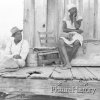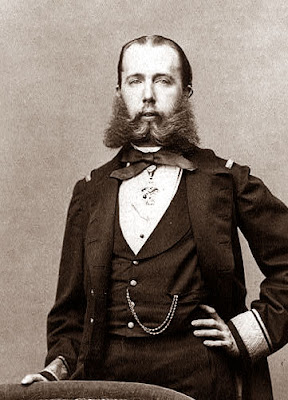My first attempt at any timeline whatsoever. Comments and Criticism are Welcome.
AN AHISTORICAL ACCOUNT OF THE WORLD 1865-2009

“Untune that string, take but degree away, and hark! what discord follows…”
April 7th, 1865
Robert E. Lee strode down a dirt path toward Appomattox. As he bounced up and down on Traveler, the horse he had ridden for the duration of this long and terrible war. He looked behind him, and gazed upon the few ragged men left in the once grand Army of North Virginia. They were tired, and they were hungry. But the men were still loyal to the fullest. “They are certainly braver than I had ever imagined possible,” he thought to himself, “Surely I owe it to each and every one of these men to see them through this safely.” He had never thought about surrendering, and even now had doubts about such an action, but yesterday’s rout at Saylor’s Creek had shaken his resolve to fight on and try and take to the battle to North Carolina.
While he contemplated his serious and difficult course of action, a brief flash caught his eye from the far bushes to his right. Less than a second later, a crack shook his eardrum, as the bullet struck his right side, piercing his heart. The impact and the shock of what had just happened knocked him off Traveler, who whinnied and stood on its hind legs at the sharp sound of the distant rifle shot. Hitting the ground, Lee could only wonder why instantaneously the sound from all around him became almost mute, and why when the soldiers around him screamed, only a few words reached him. As he listened for what seemed to be an eternity, though it had only been seconds, one of the words Lee finally overheard was shot. “Ah, so now I am sure.” Lee thought dryly. But even with his fate known, the General was still perplexed at his surroundings. He didn’t feel anything, but at the same time, it was hard to breath, or even look around. “This is most peculiar, Lee thought to himself, then felt inclined to make a witty comment. “I am most sure, that if man knew that this was in fact death, he wouldn’t be so inclined to fear it!” Lee chuckled at his ability to joke at such a time. As his eyes started to close for the last time, a small smile grew across his face.

AN AHISTORICAL ACCOUNT OF THE WORLD 1865-2009

“Untune that string, take but degree away, and hark! what discord follows…”
April 7th, 1865
Robert E. Lee strode down a dirt path toward Appomattox. As he bounced up and down on Traveler, the horse he had ridden for the duration of this long and terrible war. He looked behind him, and gazed upon the few ragged men left in the once grand Army of North Virginia. They were tired, and they were hungry. But the men were still loyal to the fullest. “They are certainly braver than I had ever imagined possible,” he thought to himself, “Surely I owe it to each and every one of these men to see them through this safely.” He had never thought about surrendering, and even now had doubts about such an action, but yesterday’s rout at Saylor’s Creek had shaken his resolve to fight on and try and take to the battle to North Carolina.
While he contemplated his serious and difficult course of action, a brief flash caught his eye from the far bushes to his right. Less than a second later, a crack shook his eardrum, as the bullet struck his right side, piercing his heart. The impact and the shock of what had just happened knocked him off Traveler, who whinnied and stood on its hind legs at the sharp sound of the distant rifle shot. Hitting the ground, Lee could only wonder why instantaneously the sound from all around him became almost mute, and why when the soldiers around him screamed, only a few words reached him. As he listened for what seemed to be an eternity, though it had only been seconds, one of the words Lee finally overheard was shot. “Ah, so now I am sure.” Lee thought dryly. But even with his fate known, the General was still perplexed at his surroundings. He didn’t feel anything, but at the same time, it was hard to breath, or even look around. “This is most peculiar, Lee thought to himself, then felt inclined to make a witty comment. “I am most sure, that if man knew that this was in fact death, he wouldn’t be so inclined to fear it!” Lee chuckled at his ability to joke at such a time. As his eyes started to close for the last time, a small smile grew across his face.






